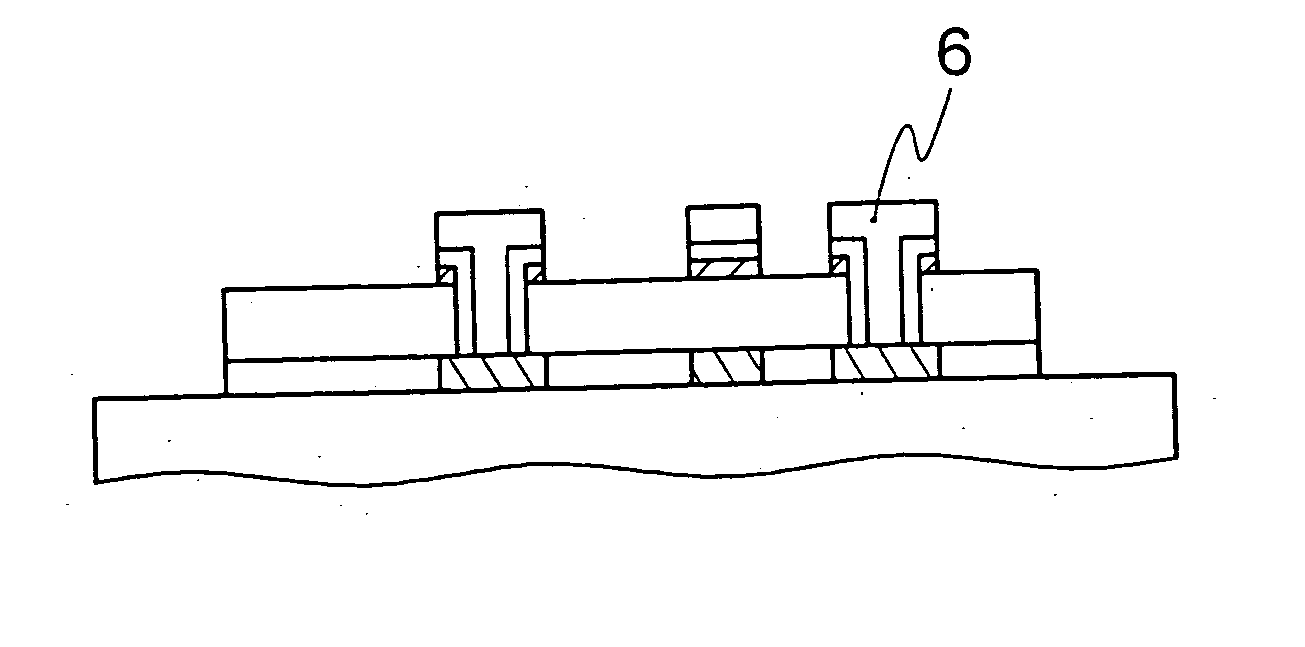Laminate and its producing method
a technology of laminate and producing method, applied in the direction of magnets, printed element electric connection formation, magnetic bodies, etc., can solve the problems of weak adhesion between the formed circuit pattern and the substrate, the semi-additive process is known, and the adhesion tends to be weaker, so as to achieve excellent surface smoothness
- Summary
- Abstract
- Description
- Claims
- Application Information
AI Technical Summary
Benefits of technology
Problems solved by technology
Method used
Image
Examples
example 2
[0225] A thin copper film was formed by ion plating on one face of a polyimide film having a thickness of 12.5 .mu.m (Apical HP available from Kaneka Corporation). The surface smoothness of the polyimide film used in the experiment was 1 .mu.m on a Rz value basis. The ionization condition was 40 V, and the bombardment condition was an argon gas pressure of 26 Pa and substrate heating temperature of 150.degree. C. in principle. Films having a different thickness ranging from 5 to 100 nm were formed by this method.
[0226] Then a copper plating layer was formed on the laminate composed of polyimide film and ion plating copper layer by electroless plating method. The method for forming electroless plating layer is as follows: first, the laminate was cleaned by an alkaline cleaning solution and then a short time of pre-dipping was carried out with acid. Further, platinum was applied and reduction using alkali was conducted in an alkaline solution. Then chemical copper plating in alkali fo...
example 3
[0236] In the same manner as in Example 2, a thin copper film was formed on one face of a polyimide film by ion plating method.
[0237] Another thin copper film was formed on the thin copper film formed in that way by DC sputtering method. The conditions for sputtering were a DC power of 200 watt and an argon gas pressure of 0.35 Pa in principle. Films having a different thickness ranging from 5 to 1,000 nm were formed.
[0238] The adhesion strength of the thin copper film layers formed in this way was evaluated from the peeling strength value. In the evaluation of adhesion, the face peeled was always the interface of the polyimide film with the ion plating copper layer, and the conditions of ion plating did not affect the peeling strength so much although the thickness of the ion plating copper layer had an effect on the strength. That is, when the thickness of the ion plating layer is 10 nm or less, the adhesion strength ranged from 1 to 4 N / cm, varying widely from place to place. Thi...
example 4
[0247] A thin copper film was directly formed on one face of a polyimide film having a thickness of 12.5 .mu.m (Apical HP available from Kaneka Corporation) by DC sputtering. The condition of the DC sputtering was the same as that of Example 3. Films of various thickness ranging from 5 to 1,000 nm were formed. When the adhesion strength was measured, the peeling strength was at most 1 N / cm in all film thickness.
PUM
| Property | Measurement | Unit |
|---|---|---|
| thickness | aaaaa | aaaaa |
| thickness | aaaaa | aaaaa |
| thickness | aaaaa | aaaaa |
Abstract
Description
Claims
Application Information
 Login to View More
Login to View More - R&D
- Intellectual Property
- Life Sciences
- Materials
- Tech Scout
- Unparalleled Data Quality
- Higher Quality Content
- 60% Fewer Hallucinations
Browse by: Latest US Patents, China's latest patents, Technical Efficacy Thesaurus, Application Domain, Technology Topic, Popular Technical Reports.
© 2025 PatSnap. All rights reserved.Legal|Privacy policy|Modern Slavery Act Transparency Statement|Sitemap|About US| Contact US: help@patsnap.com



